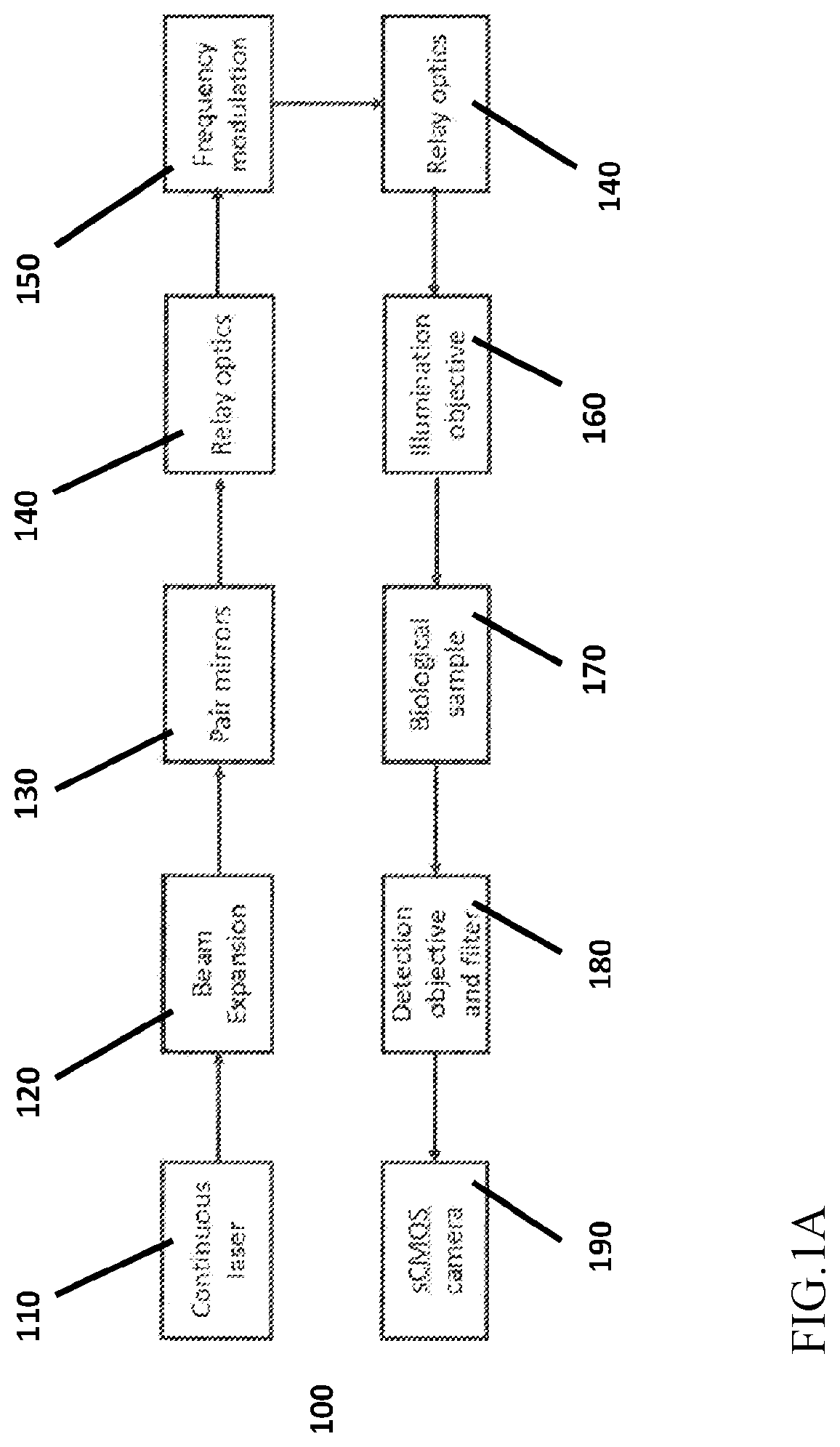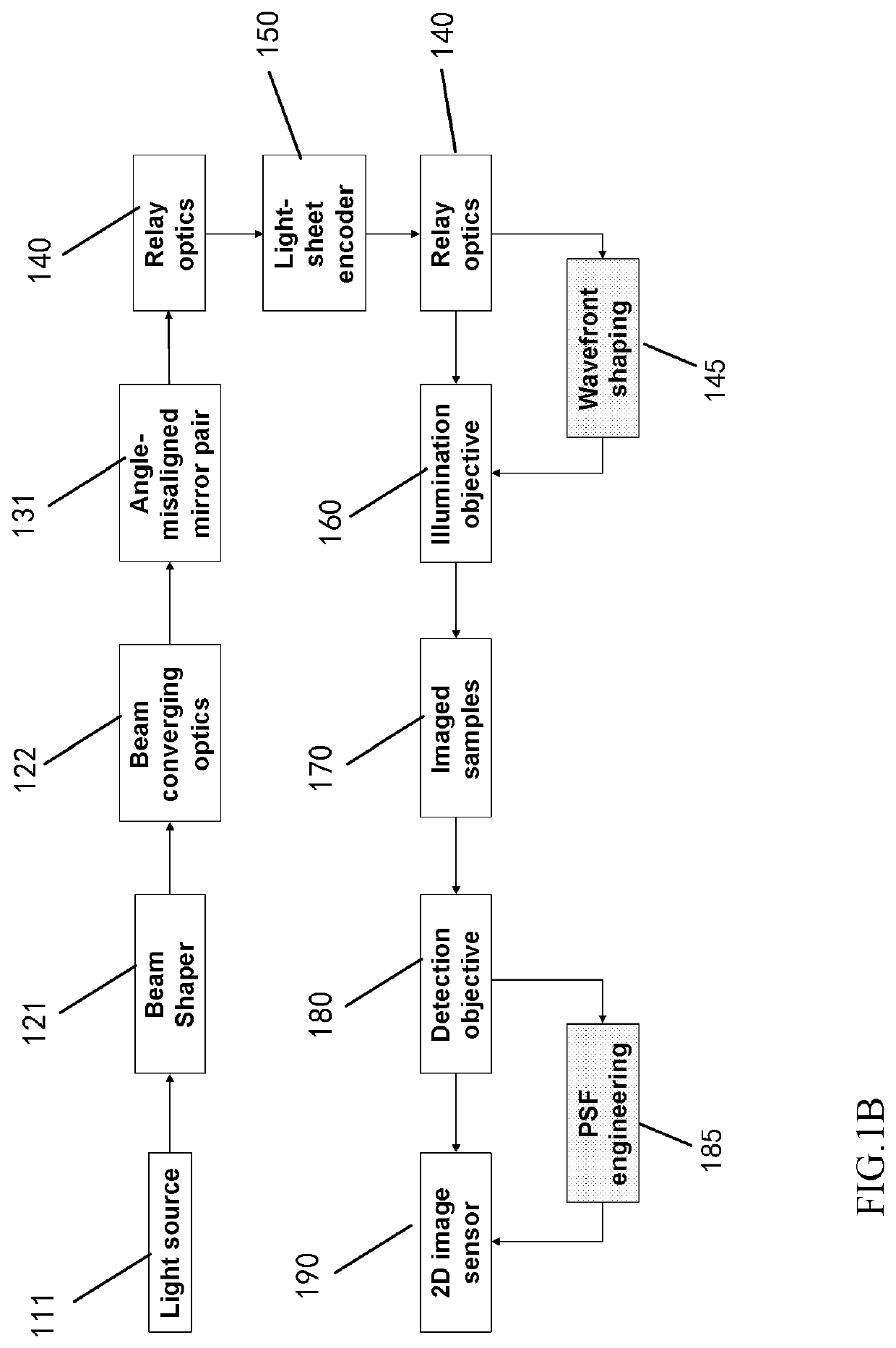Apparatus and method for fast volumetric fluorescence microscopy using temporally multiplexed light sheets
- Summary
- Abstract
- Description
- Claims
- Application Information
AI Technical Summary
Benefits of technology
Problems solved by technology
Method used
Image
Examples
example 1
[0089]The fast volumetric imaging device can capture continuous video of dynamic processes occurring in a biological sample. To demonstrate this, 1 μm diameter fluorescent polymer beads were supplied to water and injected by a syringe pump into a square glass pipette. An illumination and a detection objective were positioned orthogonally to the neighboring sides of the glass pipette. This configuration permits the detection objective to capture the dynamic motion of the fluorescent polymer beads in a microfluidic flow. FIG. 7(a) shows a volumetric image of the fluorescent polymer beads at 80 ms. FIG. 7(b) shows a volumetric image of the fluorescent polymer beads at 680 ms. FIG. 7(c) shows a volumetric image of the fluorescent polymer beads at 1.36 s. FIG. 7(d) shows a volumetric image of the fluorescent polymer beads at 1.92 s. The volume frame rate was −25 vol / sec, and the video was used to estimate a speed of 27 μm / sec for the flow.
example 2
[0090]The fast volumetric imaging device was used to image the blood vasculature in mouse intestine and the glomeruli in a mouse's kidney. The intestine and the kidney tissues were cleared in an OPTIClear solution for better optical transparency and labeled on the endothelia cell membrane with a DiI (DiIC18) dye. FIG. 8(a) is a volumetric image of the network structure of the blood vessels in the intestine. The image demonstrates that even angiogenic sprouts can be clearly visualized. FIG. 8(b) shows three glomeruli attached to the blood vascular network in the optically transparent mouse's kidney tissue. The volume frame rate was 1.6 vol / sec.
example 3
[0091]The fast volumetric imaging device can be configured to incorporate extended depth-of-focus (DOF) with wavefront coding (WFC). A predefined phase mask can be placed in the detection path such that it engineers the point spread function (psf) of the system to be less depth-variant. A WFC scheme based on a cubic phase mask (CPM) can be used during deconvolution to achieve an extended DOF in the fast volumetric imaging device. The CPM phase function can be described as φ (u,v)=r (u3+v3), where u and v are the spatial frequency coordinates, and r is the free optimizing parameter. The CPM was placed at the back focal plane of the detection objective lens (20×, NA=0.4). The PSF is nearly invariant across the depth >50 μm. This shows a clear extended DOF effect compared to the PSF without CPM (only having a DOF of −5 μm). The CPM only modulates the phase and therefore no loss is introduced. The psf simulation study shows the depth invariance (more than 50 μm) of the psf when the CPM ...
PUM
 Login to View More
Login to View More Abstract
Description
Claims
Application Information
 Login to View More
Login to View More - R&D
- Intellectual Property
- Life Sciences
- Materials
- Tech Scout
- Unparalleled Data Quality
- Higher Quality Content
- 60% Fewer Hallucinations
Browse by: Latest US Patents, China's latest patents, Technical Efficacy Thesaurus, Application Domain, Technology Topic, Popular Technical Reports.
© 2025 PatSnap. All rights reserved.Legal|Privacy policy|Modern Slavery Act Transparency Statement|Sitemap|About US| Contact US: help@patsnap.com



